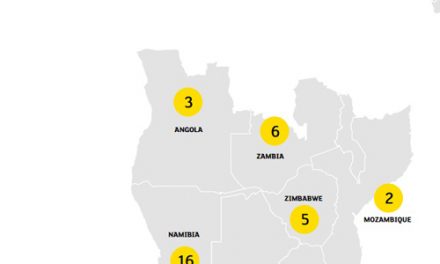
International Logistics Hub progressing into reality
In the continual effort to boast economic growth and competitiveness on the global market spearheaded by the Logistics industry, the Government, through the National Planning Commission (NPC) and the Ministry of Works and Transport, with assistance from the Japan International Cooperation Agency (JICA), have been preparing a Master Plan for the development of an International Logistics Hub for SADC Countries in Namibia.
The development of an International Logistics hub got off the ground with the initial Strategic Environmental Assessment (SEA) which is currently underway and is being run by the Southern African Institute for Environmental Assessment (SAIEA).
“The overall goal of the project is to speed up economic growth by development of Namibia as ‘A Logistics Nation,’ which will contribute to making SADC more competitive in the global market as well as an accelerated growth of other sectors in the Namibian economy. The project will also seek to increase employment and improve income equality in Namibia,” said SAIEA in a background document of the project.
Development of the Logistics Hub will include establishing, expanding and upgrading transport and infrastructure facilities along major routes.
The corridors which are to be further developed will include the Walvis Bay – Ndola – Lubumbashi Development (WNLD, aka Trans-Caprivi), Trans-Kunene, Trans-Kalahari and Trans-Orange with the major nodes being Walvis Bay, Swakopmund, Katima Mulilo, Oshikango and Luderitz.
The Strategic Environmental Assessment which started with a baseline description in March and progressed to July 2014, focussed on the the present situation of the nodes and corridors, from socio-economic and bio-physical perspectives.
In their report of the baseline description SAIEA noted that no fatal flaws were identified during this stage of the study, but care will be needed to implement mitigation measures especially in the light of the two main sensitive areas namely Central Namib coast and the North east which stood out as potential areas to be most affected biophysically and socio-economically.
To follow the baseline description, will be scoping which already started in September and will progress through out October and will be done to identify the issues that require attention and thorough assessment will be done in this period.
Currently Stakeholders and interested and affected parties have been invited to information meetings, where the proposal will be broadly presented and issues and cumulative impacts considered. Focus Group Discussions will be held in Walvis Bay, Luderitz, Oshikango and Katima Mulilo.
The actual assessment will progress from October 2014 to January 2015 where the potential issues and impacts will be considered in depth by the SEA team and in consultation with relevant experts. A Strategic Environmental Management Plan (SEMP) will be compiled to mitigate the negative impacts that are identified during this process.
Said SAIEA, “Assessment reports and feedbacks will follow in January 2015, where, the Draft SEA report will be made available to all registered interested and affected parties in mid-January 2015 while feedback will be provided in a public presentation of the SEA findings in Windhoek, in mid-February 2015.”
“After the Environmental Clearance for this project is approved for implementation, applications will be made by the client (NPC / MWTC) to MET, based on the findings of the SEA and the recommendations in the SEMP,” added SAIEA.











































